In the 1980s there were hardly any 60 Brown bears Cantabrian in Asturias . Despite the fact that their hunting was prohibited in 1967, poaching and traps so that they did not attack the hives led them to on the brink of extinction.
The environmental movements managed to make the local population aware of The importance of its conservation . Today there are around 350 copies, thanks to the joint work of neighbors, administration and NGOs such as Brown Bear Foundation (FOP).
We are discovering all this hand in hand with Luis Frechilla , biologist and self-taught cartoonist (many of the animals we see on the posters and brochures are his work) who in 2010 set up Wild Spain Travel , agency specialized in nature trips.
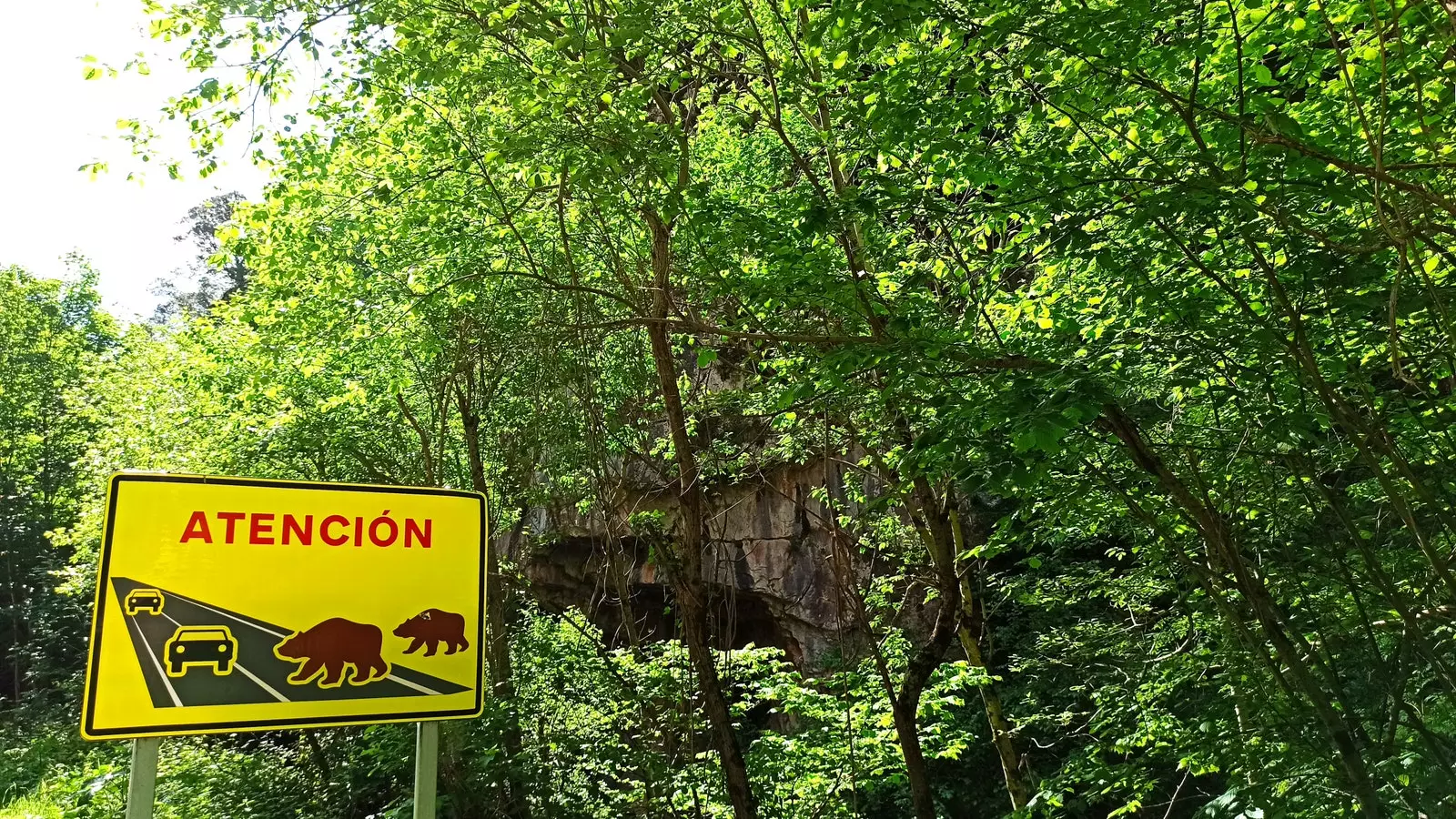
Attention! We're going to see bears!
With them we have embarked on a three-day tour of the western part of the province , to try to spot a specimen while discovering the work of the FOP. All in a press trip financed by another foundation, the NGO The European Nature Trust (TENT) , involved in conservation activities.
DAY 1: THE LARGEST OAK GROUND IN SPAIN
Luis has been introducing us to this exciting world in the minibus that will move us at all times from one place to another, starting by picking us up at the Oviedo station to go until Cangas del Narcea.
Over there, on the terrace of Narcea Cider House , we will have the first contact with the abundant and delicious asturian gastronomy : scorpion fish cake, cheese platter, battered scallops... All washed down with cider (of course) and cider sangria (where it is mixed with rum, fruit and lemon soda).
The technical stop has been to gain strength before visiting the Muniellos Comprehensive Nature Reserve , within the Natural Park of Fuentes del Narcea and Ibias (the first of the three natural parks that we are going to visit).

A look at the green landscape of Trabáu.
There we are received by Reyes, one of the guards, who explains that Muniellos has a total of 5,500 hectares to which access is prohibited. “ Only 20 people can enter a day , requesting permission in Asturias.es”. These places can be reserved on December 15 of each year, but obviously they fly.
If we succeed, we will have access to the “largest oak grove in Spain , and one of the best preserved in Europe”. Here it will be difficult to see bears. In fact, by having such limited access we will have the “feeling that you are not going to meet anyone”.
But just because we're not going to see bears doesn't mean there aren't any. Víctor Trabau, from Wild Spain Travel, soon recognizes during our walk claws of some males in the trees , as a method of marking the terrain.
At the exit of the reserve we stopped to see the curtain of chains , one of nearly 2,000 in the entire north of the peninsula. They are surprising forts made with stone walls to prevent bears from raiding hives . The usual thing is that they are round (like this one), but there are also square or horseshoe-shaped ones.

There you can see some bear cubs.
“Beekeeping is very important in Asturias” , explains Víctor, since on the one hand “it was nourished by wax for the candles of the Coria Monastery”, and on the other hand “there was no other sweetener than honey”.
Next we move to Posada de Rengos , small parish of Cangas del Narcea where we will spend the night. A very special snack awaits us in the interior patio of mario house , where we will taste the pregnant buns (of mincemeat and chorizo with bacon) that they make in their own oven, as well as potato omelette and ham.
All washed down with drunk red wine in wooden bowls (they will be dyed red) that Víctor has made by hand as good cunqueiru (trade inherited from his family), as he tells while he carves one in situ.
The day concludes with the first bear sighting attempt, in the surroundings of the Beech forest of the Monastery of Hermo . Although this first observation will not bear fruit, the views are equally spectacular, with the impressive La Penona mountain from the front (where we will see multiple chamois running) and the parish of Gedrez downstairs preparing for nightfall.
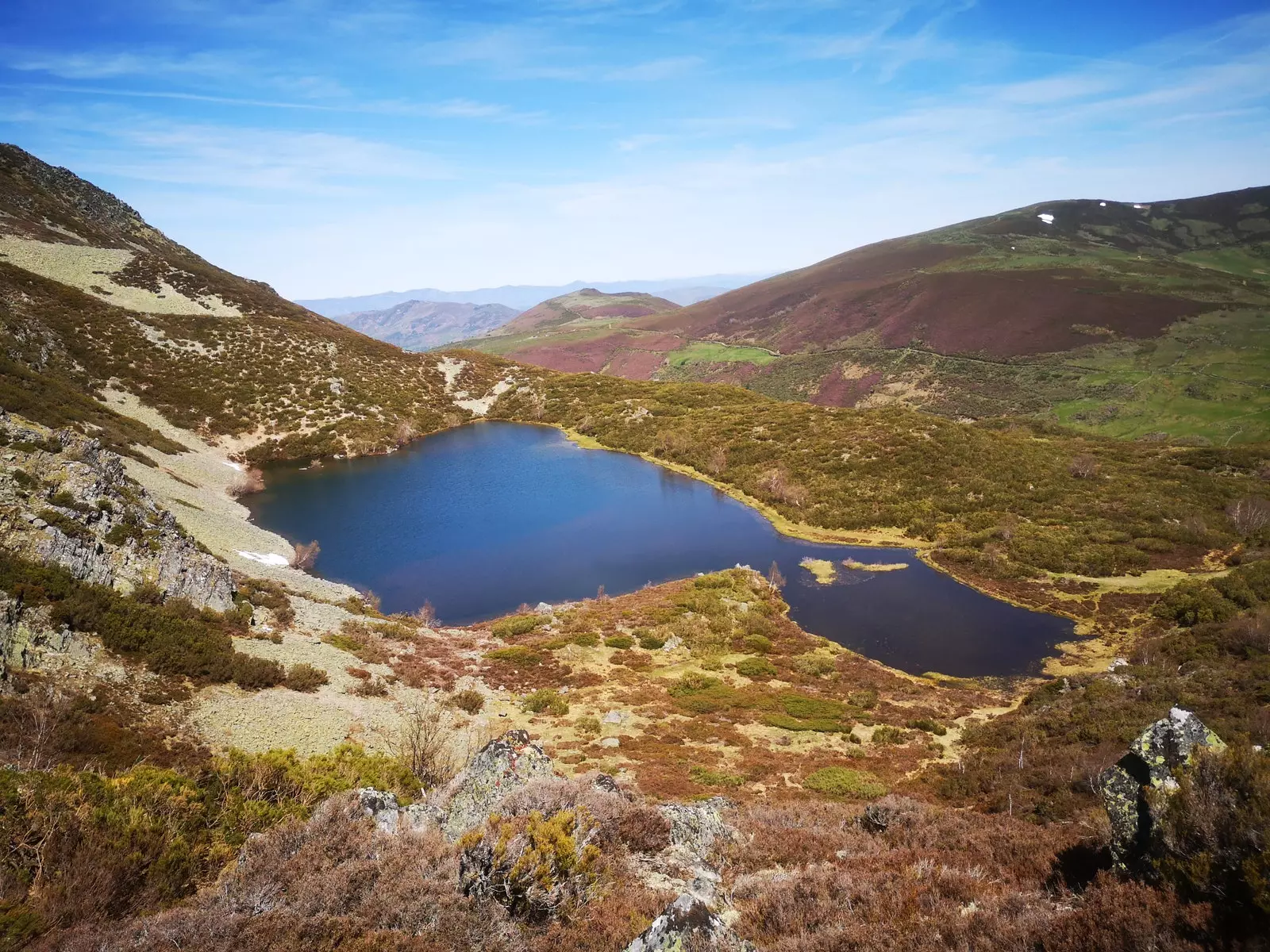
Arbas Lagoon, Asturias.
DAY 2: BEARS, WINCHES AND CHERRY TREES
after breakfast the delicious frixuelos (typical sweet that is seasoned with honey) in our accommodation the craftswoman , we go early in the morning to try the sighting again. We do it in the vicinity of the Port of Leitariegos , with two members of the FOP (the true protagonists of this adventure: it is the NGO that has launched the most Life projects).
Juan Carlos Blanco (biologist) explains that bears "rarely exhibit themselves, although sometimes they do." And it is practically impossible to see them up close: “I have been there for more than 30 years and I have never come across one”. As his companion Luis Fernández (naturalist, the oldest guard of the foundation) points out, “We are very noisy, they are going to leave. It is a very shy animal.".
In any case, Frechilla had already explained to us what to do in the unlikely event that we come across one: “Keep calm and try to reassure him by talking. There is no need to run, because he runs more . We are going to see them from afar, at 400-500 meters, it will be difficult to be in danger”.
That's how it is. Our guides have managed to locate through their telescopes to a couple in the mountains what we have in front of us. A male (black, the largest) and a female (blonde) are in full courtship. It's magical to see them interact freely . These moments are what give meaning to the rest of the trip (which, in any case, is not wasted).
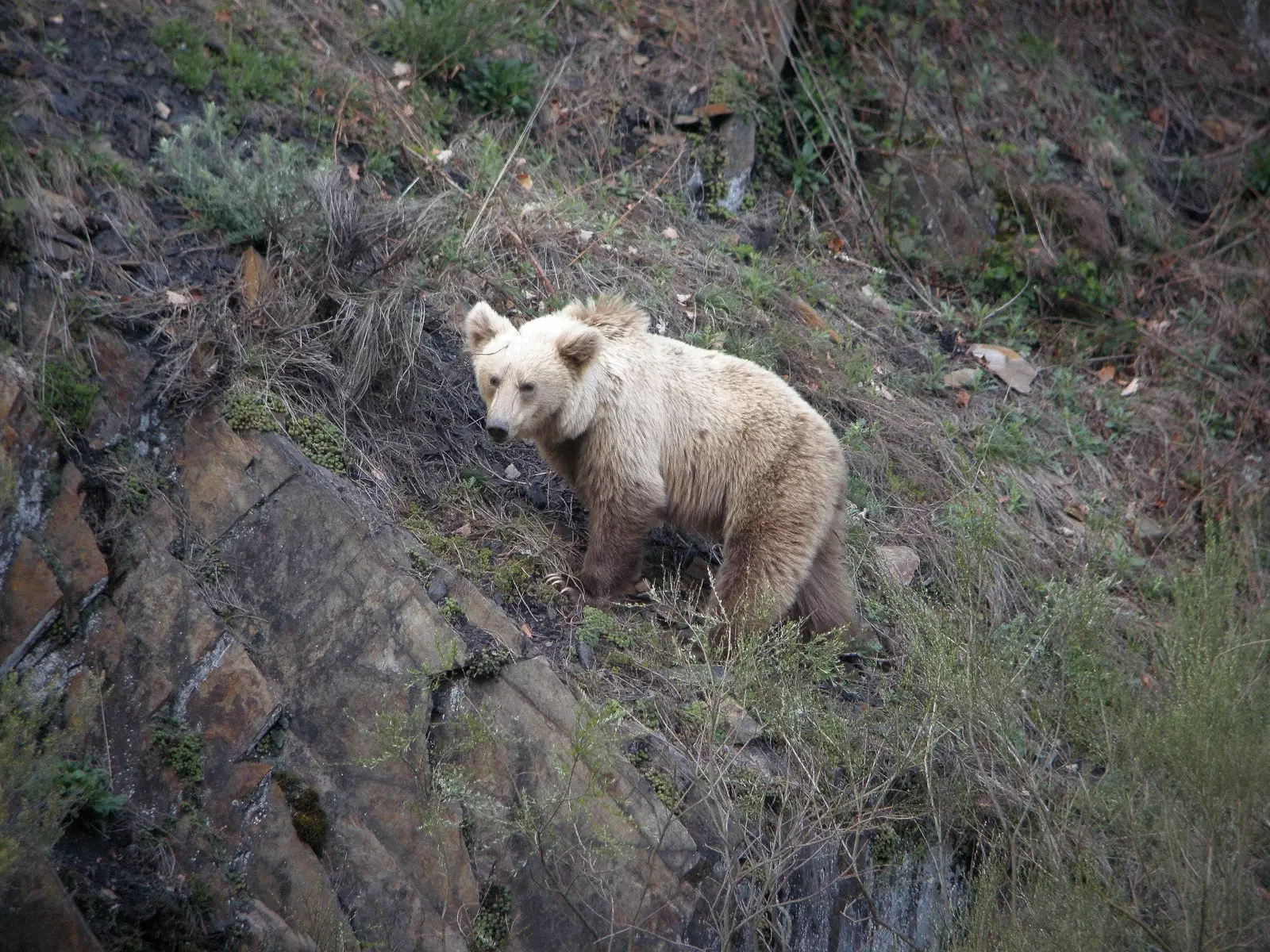
It is magical to see them interact freely.
Fernández points out that there is enough genetic diversity for the current population, and that in addition "there has been contact between eastern and western population of bears” in Asturias. Uniting both is one of the objectives to follow, carrying out actions such as planting trees to create connecting forests between one and the other.
Then we went to see one of those repopulations carried out by the FOP, next to the village of Vallado. They have planted cherry trees there, since, as Juan Carlos explains, “ bears are crazy about fruit, candy and honey . They do tremendous crazy things, like entering the hives with electrocution.”
They have put them on the outskirts, with the aim not only of feeding them, but to keep them away from the houses , which are filled with family and tourists in summer. “People are afraid of bears. The idea is that they go outside the towns to get cherries. We plant on abandoned farms that people give us.” To do this, in addition to having volunteers ("people love it"), they hire local companies: "The foundation wants the native people to see that bears can give money”.
In its surroundings we attend the most authentic meal of the trip. we do it in the shack , the winch of the homonymous parish whose bar is decorated with two collections: that of homemade liqueurs (front) and the discs (on the right).
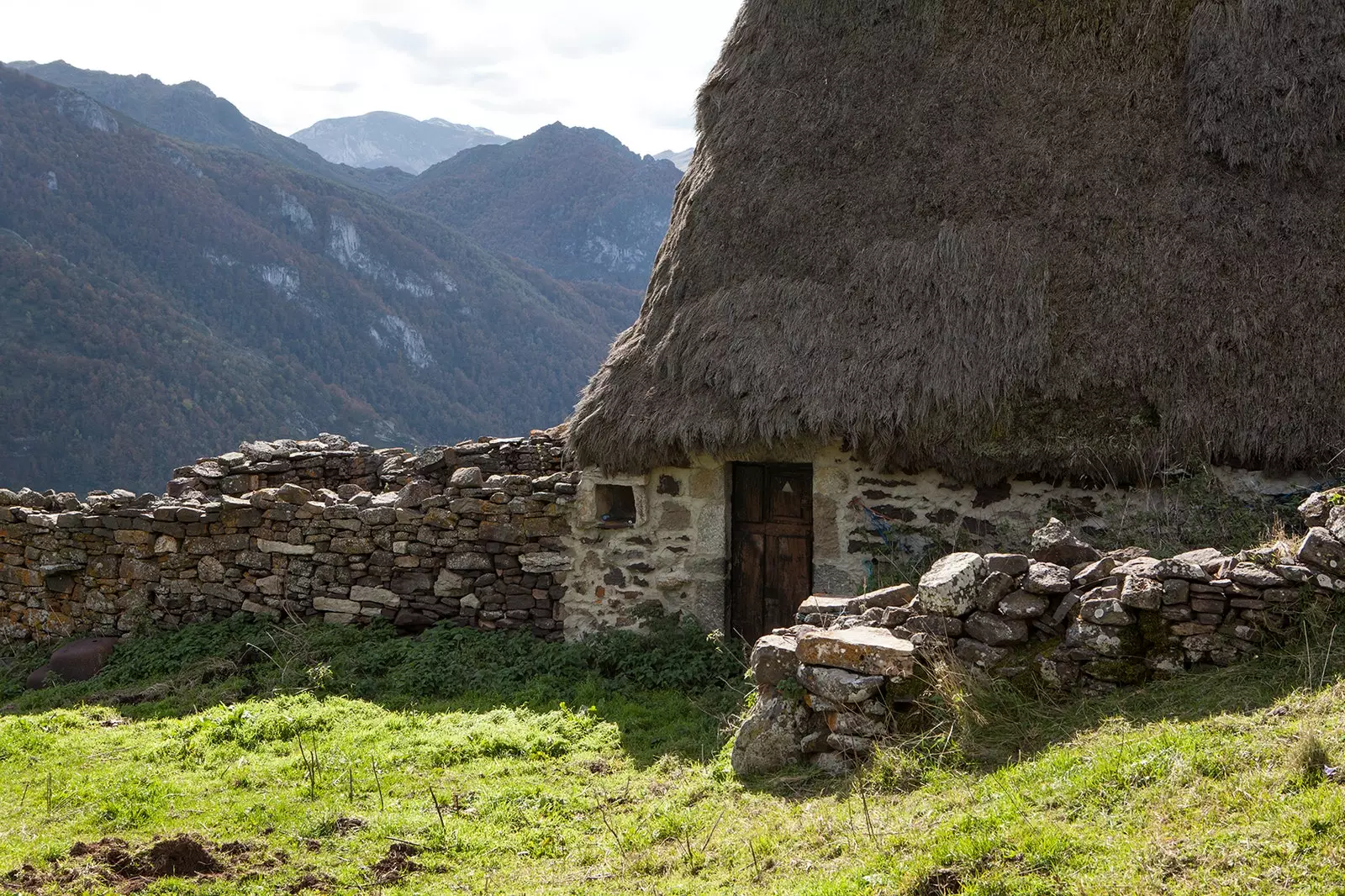
Braña de Murias in Somiedo Park.
In its cozy interior room (which does not lack detail) we realize the beans with clams and heather pot (with garnish of marinated ribs, chorizo and bacon) first. If there is space, for the main course there are fried eggs with potatoes and ham, as well as stewed meat with potatoes. Spectacular, like the interior terrace, where we have coffee enjoying the privileged views of the area.
From there we moved to the Somiedo Natural Park , an example of conservation and sustainability. And that its mayor, Belarmino Fernández, confesses to us that when this bucolic municipality surrounded by mountains declared itself a natural park in 1988, they thought “that the bear would not make it to the 21st century”.
But it brought important economic development at the same time that the bear population multiplied, to the point that tourism is today so important. like livestock . The key: a system "very permissive with traditional agriculture and very restrictive with tourism", something that was not a brake, "but a way of develop sustainable tourism ”. Today it is studied as a model from other parts of Spain.
We visited The House of the Bear from Alice's hand. There we discover her historical relationship with the people through videos, photos, posters and various original or replicated material (from bones to traps). And how it went from indiscriminate hunting to protection, as well as the current problem: having more bears, there is more contact with humans , since they come to eat hives and garbage.

We were fascinated by the bear and her cubs.
But in Asturias they are clear: any damage caused by a bear is paid to the individual immediately. We also found out that due to climate change, bears are going to winter less and eat more nuts, so it is being repopulated with chestnut trees (a tree that withstands the heat well) to fill this gap.
We end the day with a new sighting in the Lake Valley , led by the president and founder of the FOP, Guillermo Palomero. He explains to us the secret that the bear population has grown so much in recent years: "We have all rowed together in the same direction, and there is the result."
The key has been to demonstrate that "the bear gives economic development" and "avoid conflicts", which are "perfectly foreseeable". by your side we see a bear with her two offspring , born in January, running around the crest of the mountain in front of us.
We go to the impressive accommodation that is the Palace Hotel Flórez-Estrada with a very good taste in the mouth. And it is that, as Guillermo points out, "we have seen something exceptional".
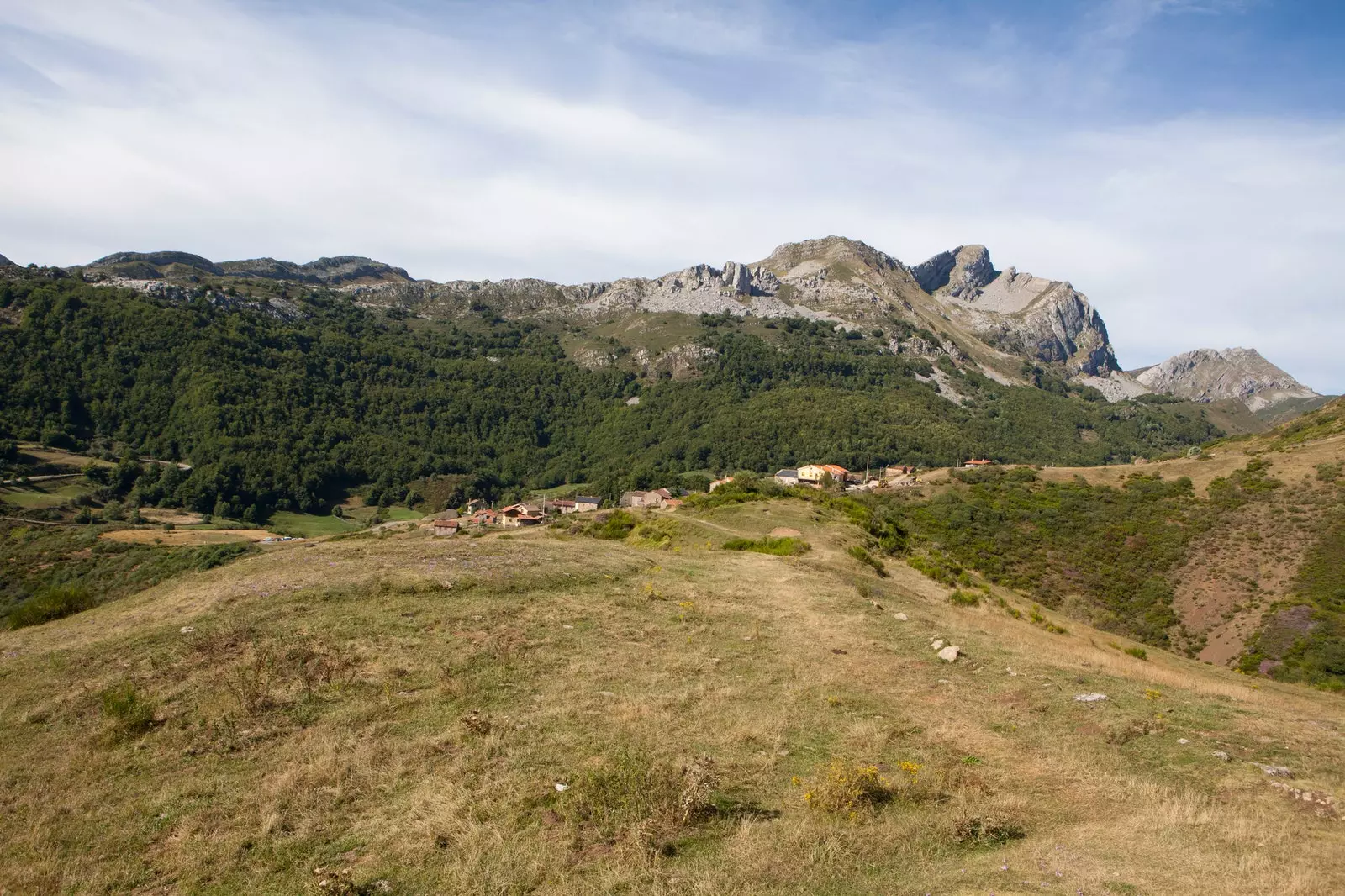
Views of La Peral.
DAY 3: TEITOS, GLACIER LAKES AND MORE BEARS
The third and final day starts at the viewpoint of La Peral (small village within Somiedo), where we will have 360º views, as well as picnic areas and explanatory panels with drawings by Luis.
The cartoonist and biologist himself explains to us that we are at a marked observation point: "We are interested in people going to these points and not to others", since they can bother the bears themselves as well as the neighbors: create a call effect, hinder the passage of cattle... That's the importance of going bear watching on a regular basis (i.e. with a guide) rather than on your own.
"People come, they find out they can see bears and they want to see them." What usually happens: they stand at a viewpoint with their binoculars (less effective than telescopes), they don't see them and they end up frustrated, “something not desirable”. The truth is that it is very difficult to locate a bear on your own. . And thanks to our guides, who have just located one on the rocks, we are having a most fruitful trip.
We briefly approached to see the impressive landscape offered by the Saliencia Lakes , where the glacial lakes reflect the green of the meadows, the gray of the rocks, the red of the soil, the violet of the heather and the yellow of the broom.
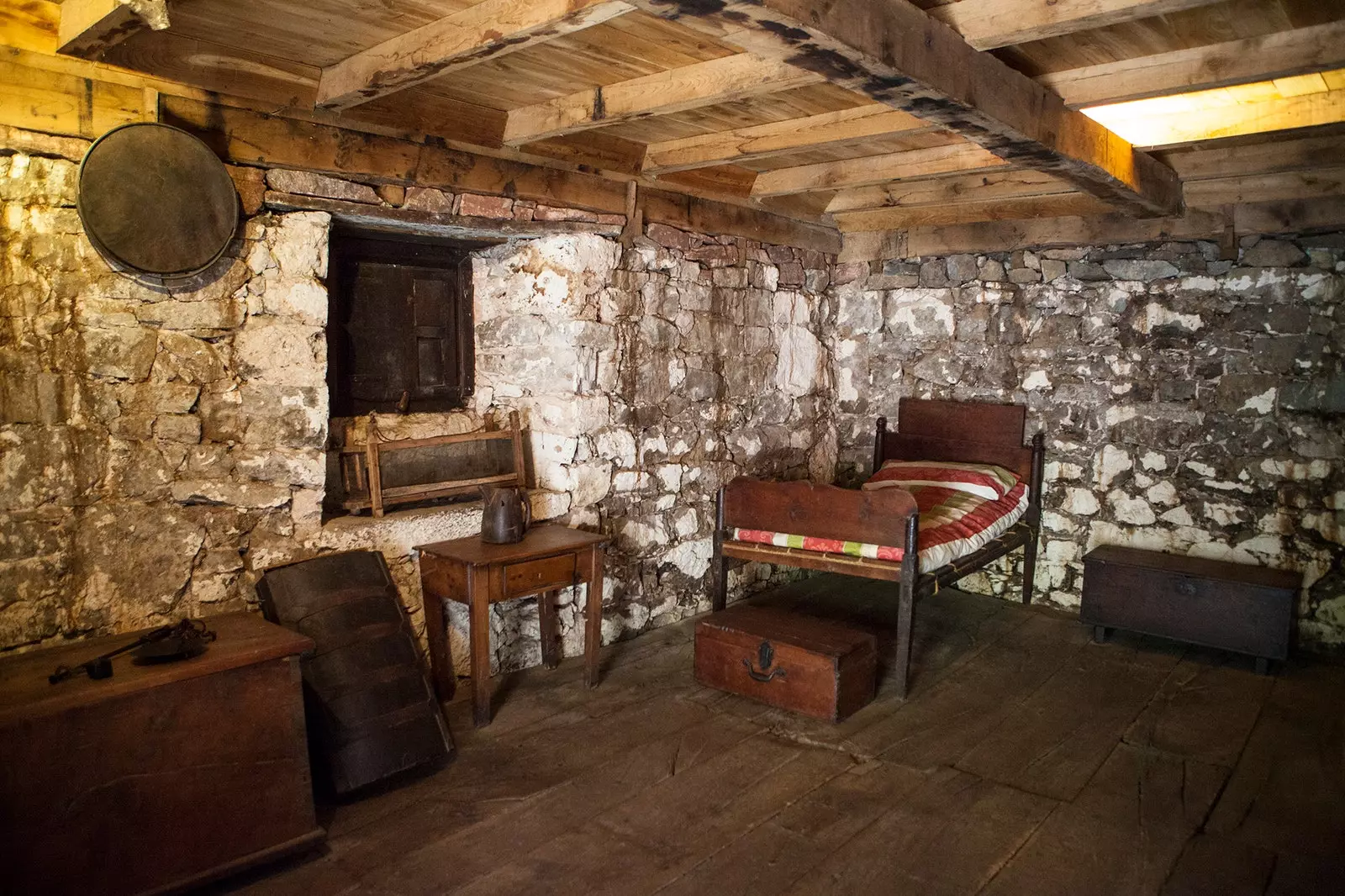
We visited the interior of the Teito cabins.
then we stop to see the Veigas Ethnographic Ecomuseum , where we will visit inside the teito cabins that we've been watching all morning. They are houses with a green roof (made by stacking broom plants) that were made to house ranchers in the brañas (settlements next to the pasture areas in the mountains).
We say goodbye to Somiedo eating in the cozy garden Good mother , a haven of peace where we taste fresh fish empanadas, hash with corn cakes, artisan cheese and tomato salad with blueberries washed down with beer, cider sangria and strawberry liqueur. For dessert: drunkards with yogurt.
Our last sighting takes place at the Puerto Ventana viewpoint, already in the Las Ubiñas-La Mesa Natural Park . Here the word has spread, and it is full of fans observing the mother bear in front of her with her two cubs. We catch them sleeping, so unless we wait a few hours they will give little play. However, we had already exceeded all our expectations: we have seen about a dozen bears in total.
We said goodbye to this unforgettable trip visiting the beautiful town of Bandujo , where time seems to have stopped between its Romanesque church and its medieval tower. Before resting in the House of Don Santos (already in the town of Proaza), the last supper will make us not forget their food in a long time.
The Senderuela It offers a sophisticated and numerous sample of what it knows how to do: vegetable cream, croquettes, boletus cake, veal with potatoes, artichokes with ham... No rush, it's a long-distance race. It will take time to get hungry again, but soon we will miss the majestic mountains through which it roams free the Cantabrian plantigrade.
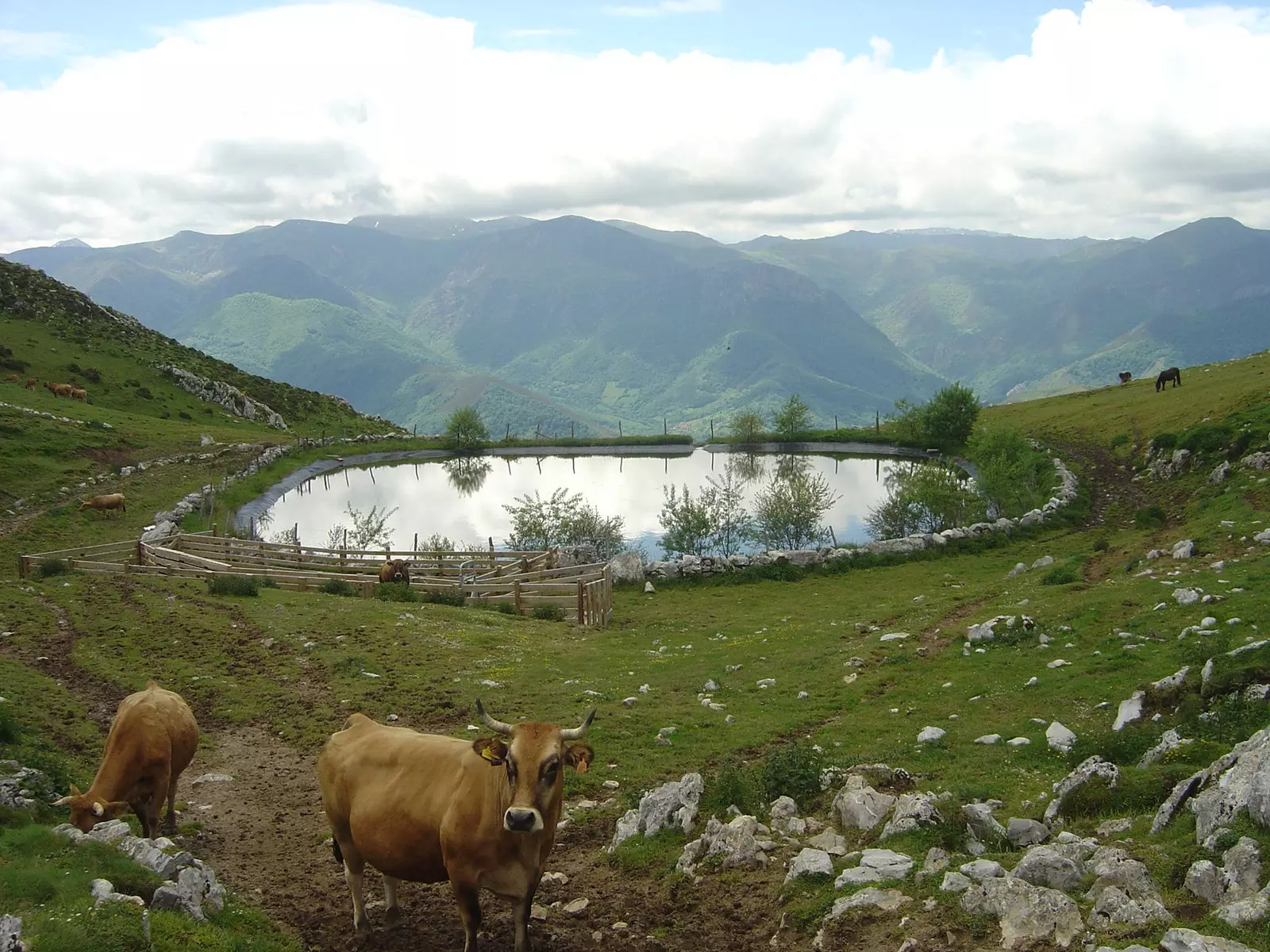
We say goodbye in the Natural Park Las Ubiñas - La Mesa.
